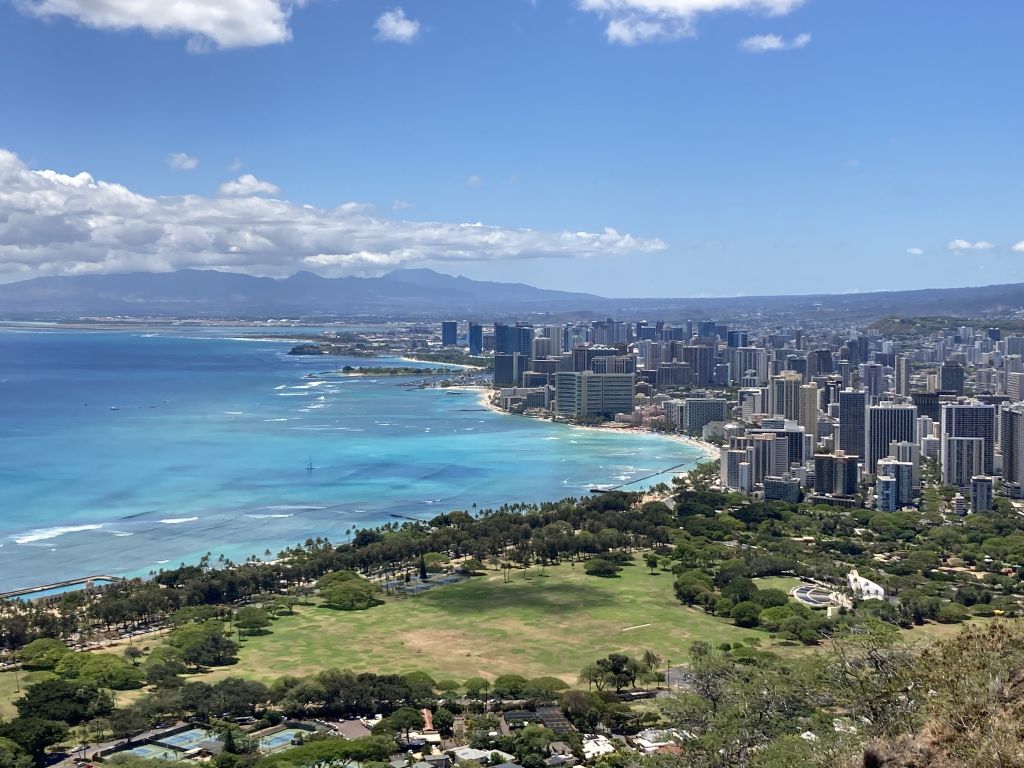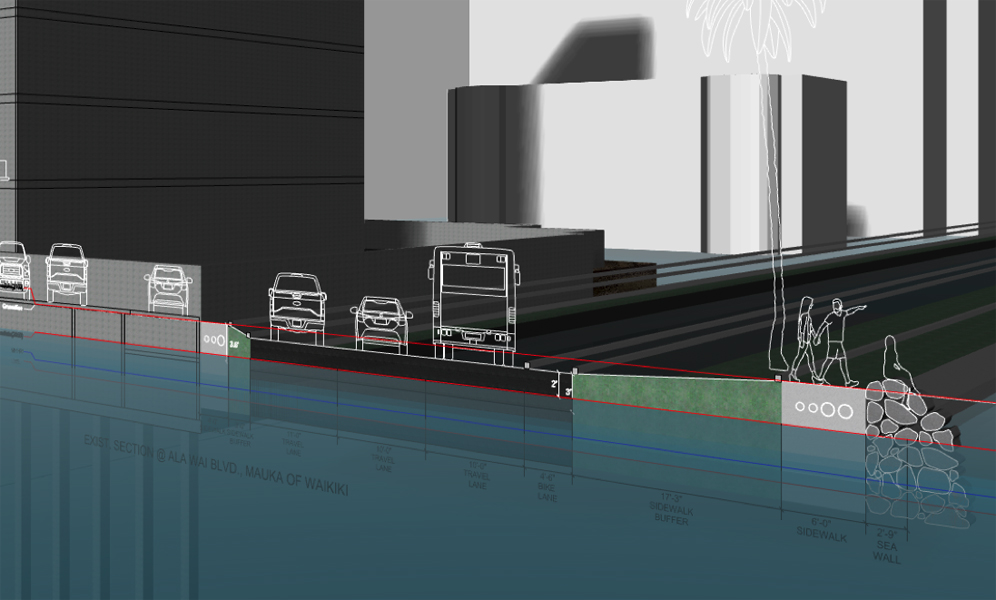Science and design collide: Benefits of interdisciplinary research and collaboration
by Jojo Briones

Those concerned about the future of Waikīkī span many perspectives: government officials, architects, community leaders, engineers, hotel managers, educators, scientists, and residents. Representatives from all these backgrounds came together recently for a virtual community outreach series to discuss the future of Waikīkī’s built environment. They explored questions of whether Waikīkī should retreat from the shoreline, armor its buildings and infrastructure, or adapt to the rising sea, and discussed what actions are needed from our community to avoid the negative impacts of rising seas and increased coastal erosion.
This kind of interdisciplinary, collaborative, and community-engaged process has proven necessary and important for the success of the Hawaiʻi Sea Grant project I have been involved with as a Graduate Fellow, called “Envisioning In Situ Sea Level Rise Adaptation Strategies for a Densely Developed Coastal Community, Waikīkī.”This approach allows networks to grow, raises different perspectives, increases the function of proposed solutions, creates real-world applications, and helps at all stages of the project. With input from the community and its leaders, our team of scientists, educators, professionals, and students can answer questions of how best to proceed more precisely, while applying our skills and resources from our diverse backgrounds.
My educational background is in architecture rather than the natural sciences, but I have always been interested in scientific research. When I joined this project, I found myself in a new network of people, not the designers and architects I was used to. This was daunting at first. However, I soon learned the benefit of this variety when I saw how the project team was able to connect and combine their networks to enhance the project. Encouraging a diversity of voices was especially apparent during our community outreach, where a variety of participants from all different backgrounds were able to express their thoughts, each with their unique knowledge as stakeholders of Waikīkī. Participation by this broad network also led to new ideas being brought to the attention of the team that have helped drive our project.
Our project team has experience in science, design, education, community engagement, and more. By collaborating, we offer many different perspectives. In my experience of architectural building design, I often focus on the functionality of space, and work within client needs to guide my outcomes. For this project, using strategies of scientific research and data analysis have proven successful in contributing to greater outcomes, and, when paired with architecture, can have a stronger impact than applying these skills separately. Additionally, when the community is involved to give feedback, like in our stakeholder workshop series, the project will be directly influenced by those who live, work, and play in Waikīkī. Being open to learning about new processes and letting other parties advise based on their unique skillset are important qualities of collaborative work. Hearing from everyone’s experiences helps promote real function for the design process.
A resident of Waikīkī, a city official, and an engineer can all agree that safety is an important aspect of adapting a building in Waikīkī for sea-level rise. Yet, if the resident personally experiences sea-level rise impacts that the others do not, the resident may be able to provide particular insight about how their community may best adapt to flooding. In contrast, the city official may have a greater understanding of the kinds of codes and regulations that would need to be updated to allow buildings to adapt in new ways, while the engineer can offer their expertise on whether the suggested adaptations are even feasible for Waikīkī. Allowing the time and space for people to discuss the feelings and obstacles involved in a project strengthens the community members’ trust of one another. Gathering to share the different impacts that a project may have on an individual creates a collective effort to find solutions that benefit a wider scale.
Not only does involving diverse experiences from stakeholders increase feasibility and the potential for real change, it also promotes a sense of real world application to the architectural designs. The team can accurately apply proposed design solutions to the context in the real-world using amazing tools, like computer aid design (CAD) software to construct 3D models of Waikīkī buildings and topography within current and future sea-level rise scenarios. This means a building or space can be visualized in 3D under conditions of future sea-level rise, a powerful tool to help the public understand the necessity for change in our coastal communities. Real solutions can be considered for the designs of future buildings and spaces in Waikīkī.
In the preliminary graphic representations shown, a base model of a site’s existing conditions can be visualized, where we can observe the water (in blue) rising to the marked red line, representing a future sea-level rise scenario in the second image. Knowing the future conditions helps in creating adaptation ideas for the site, using current scientific data to be more accurate. Instead of asking the question “Will the building/road become flooded in the future?”, we can ask “How much will the building/road be flooded?” and find specific solutions to address the problems.

The most enriching part of working with an interdisciplinary team is experiencing the universal willingness to teach, learn, and understand different points of view, while working with others to achieve a common goal that will benefit our communities in Hawaiʻi. Collaborating with others throughout this project captures the essence of Hawaiʻi, where there is a strong emphasis of caring for our land and our communities. I have learned that it will be important to continue to reach out to the project team, their wide networks, and the community as we drive this project forward to its next phase.

 About the author:
About the author:
Jojo Briones is a graduate from the Environmental Design Program within the School of Architecture at UH Mānoa, currently continuing to pursue a Doctor of Architecture degree. Jojo is enthusiastic about conservation of the natural environmental and how design can play a major role for the future.

